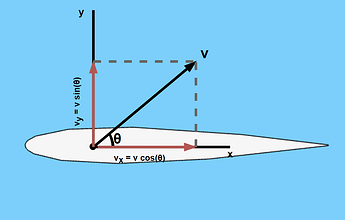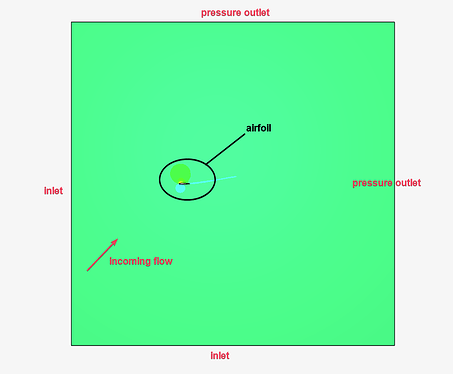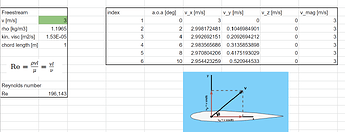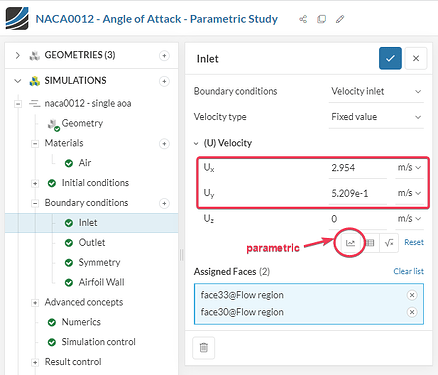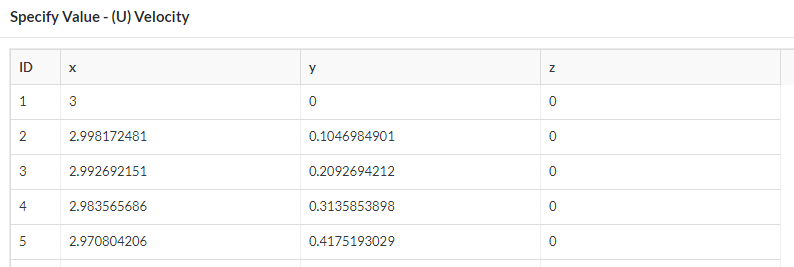You can now perform a quick parametric study on different angles of attack (aoa) to calculate the lift and drag forces of any wing or airfoil.
Taking advantage of the parametric capabilities of SimScale one can study different wing speeds at different aoa with just a few clicks. Lets utilize the following airfoil example to demonstrate the process.
Any freestream velocity (V) can be analyzed into its cartesian components (Vx and Vy) based on the incoming angle of attack (θ) as shown in this graph.
Thus, knowing the angle of attack, we can convert any freestream velocity into its cartesian components which we are going to use in SimScale.
Please take a look at the following project
To apply the above methodology, preferably, we need to create a rectangular domain and assign two inlets and two pressure outlets as boundary conditions.
Then using some math or having a look at this quick calculator I have created, we can determine the velocity components and use them in SimScale.
In SimScale, create velocity inlets and set the corresponding velocity vectors as shown below. This example corresponds to a free-stream velocity of 3 [m/s] and an angle of attack of 10 [deg]. This will help you run a single angle of attack simulation.
Now, assuming that you are interested in a greater range, you can setup the parametric study by simply clicking the corresponding button as shown above. You will then get the chance to fill in multiple variations of the velocity components to depict the required angle of attack range. To speed up the process you can even upload them via a csv file.
This will initiate an Experiment run meaning that all of the specified design points, leveraging the power of cloud, will be simulated in parallel leading to faster results and minimizing the preprocessing effort.
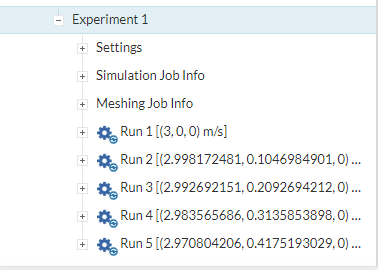
Good luck with your projects and happy simulations ![]()
